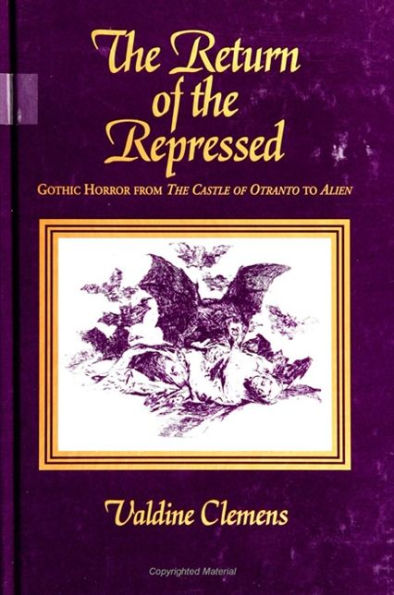Exploring the psychological and political implications of Gothic fiction, Valdine Clemens focuses on some major works in the tradition: The Castle of Otranto, Frankenstein, Dr. Jekyll and Mr. Hyde, Dracula, The Shining, and Alien. She applies both psychoanalytic theory and sociohistorical contexts to offer a fresh approach to Gothic fiction, presenting new insights both about how such novels "work" and about their cultural concerns.
Clemens argues that by stimulating a sense of primordial fear in readers, Gothic horror dramatically calls attention to collective and attitudinal problems that have been unrecognized or repressed in the society at large. Gothic fiction does more, however, than simply reflect social anxieties; it actually facilitates social change. That is, in frightening us out of our collective "wits," Gothic fiction actually shocks us into using them in more viable ways.
Exploring the psychological and political implications of Gothic fiction, Valdine Clemens focuses on some major works in the tradition: The Castle of Otranto, Frankenstein, Dr. Jekyll and Mr. Hyde, Dracula, The Shining, and Alien. She applies both psychoanalytic theory and sociohistorical contexts to offer a fresh approach to Gothic fiction, presenting new insights both about how such novels "work" and about their cultural concerns.
Clemens argues that by stimulating a sense of primordial fear in readers, Gothic horror dramatically calls attention to collective and attitudinal problems that have been unrecognized or repressed in the society at large. Gothic fiction does more, however, than simply reflect social anxieties; it actually facilitates social change. That is, in frightening us out of our collective "wits," Gothic fiction actually shocks us into using them in more viable ways.

The Return of the Repressed: Gothic Horror from The Castle of Otranto to Alien
274
The Return of the Repressed: Gothic Horror from The Castle of Otranto to Alien
274
Product Details
| ISBN-13: | 9780791443286 |
|---|---|
| Publisher: | State University of New York Press |
| Publication date: | 09/30/1999 |
| Series: | SUNY series in Psychoanalysis and Culture |
| Edition description: | New Edition |
| Pages: | 274 |
| Product dimensions: | 5.90(w) x 8.90(h) x 0.80(d) |
| Age Range: | 18 Years |
